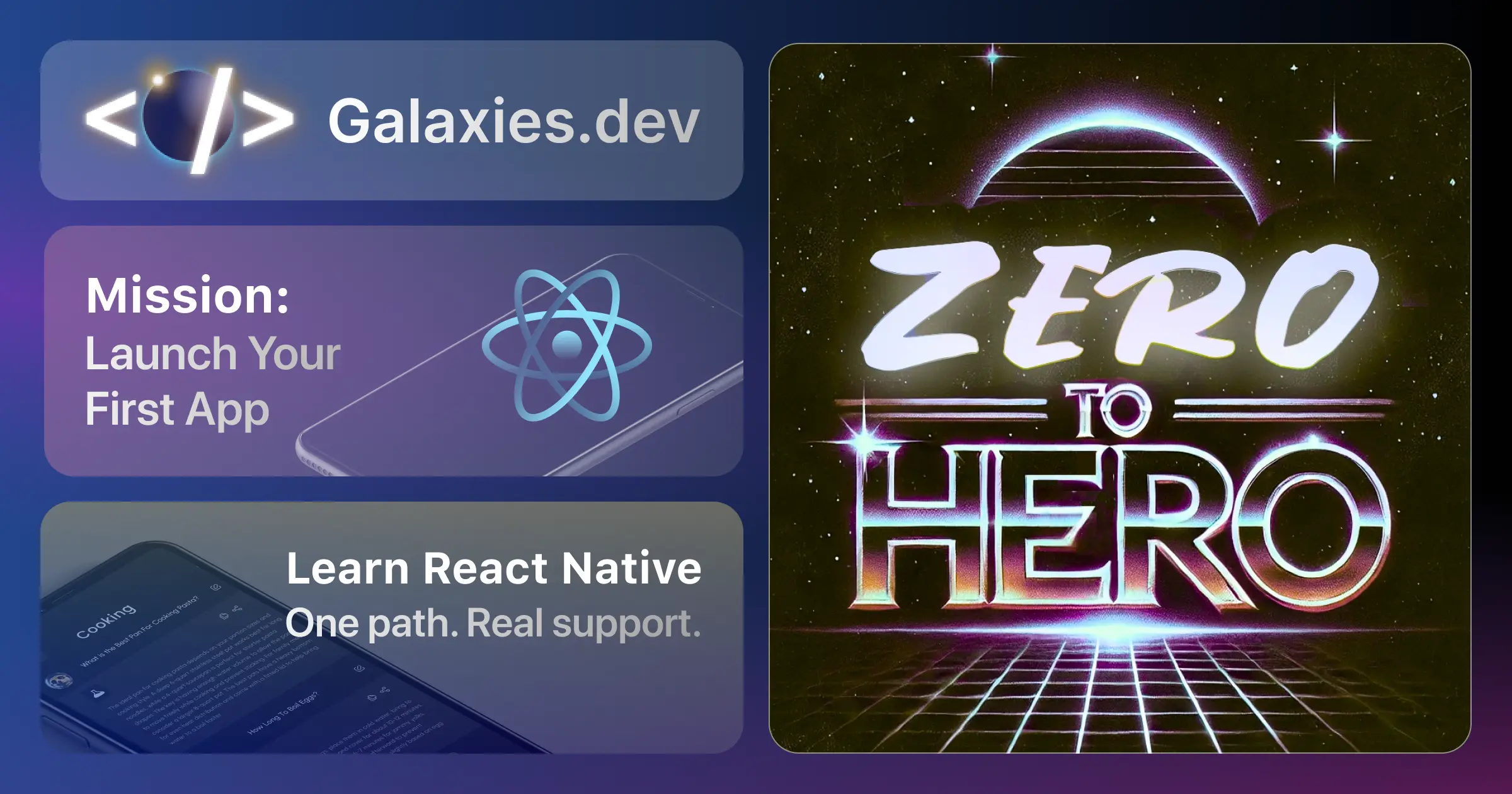The Time for React Native is Now
Last update: 2025-01-01

What if 2025 was the year you built the next big app — faster, smarter, and with fewer barriers than ever before?
Well, there’s never been a better time to get started with React Native.
React Native has come a long way since its debut in 2015, and in 2025, it’s better than ever.
It’s now more powerful thanks to the New Architecture, easier to use with tools like Expo, and trusted by some of the biggest companies in the world like Shopify, Microsoft, and Meta.
If you’ve been on the fence, let me make this simple:
The time for React Native is now.
This isn’t just about keeping up with trends; it’s about using a proven framework that’s better than ever.
And here’s why.
The New Architecture: React Native’s Core Overhaul
If you’ve ever heard complaints about React Native’s performance or its reliance on the old “bridge,” let me stop you right there—because those days are over. The New Architecture is here, and it’s a game-changer.
The two biggest upgrades — Fabric and TurboModules—completely overhaul how React Native works under the hood. Fabric introduces a faster, more flexible rendering system that allows React Native to handle complex UI updates with ease. This isn’t just a minor tweak; it’s a leap forward that makes React Native apps feel even more native while being faster and more efficient.
And then there’s TurboModules, which rethinks how native modules (the pieces that connect JavaScript to native code) are loaded and used. In simple terms, this means React Native apps are now more lightweight, faster to start up, and better equipped to scale. Whether you’re building a to-do list app or something massive like an e-commerce platform, the New Architecture ensures your app performs like a champ.
What does this mean for you as a developer?
It means fewer bottlenecks, better performance, and more control. The New Architecture unlocks capabilities that weren’t practical before, like smoother animations, multi-threaded rendering, and better support for advanced features like AR or heavy media apps.
If you’re jumping into React Native in 2025, you’re stepping into a framework that’s no longer just ”good enough” for cross-platform apps — it’s the framework to beat.
Next-Level Debugging
Let’s face it — debugging can be a developer’s worst nightmare. And that’s even been more true for React Native developers.

But with React Native’s new DevTools, those days of frustration are behind us. In 2025, React Native gives you everything you need to quickly find and fix issues, so you can spend more time building and less time stuck in the weeds.
Coming from web development, you will feel right at home.
You can now see the component tree, inspect props, set breakpoints, analyze network requests, and more features like a performance panel are planned for this year.
With other great tools like Reactotron and the existing iOS and Android dev tools, you can debug your React Native app at any level.
Oh, and then there are also Expo DevTool Plugins that allow you to debug your React Native app in a way that’s even more powerful than the native dev tools with a plugin system and custom UIs, like inspecting your SQLite database with Drizzle.
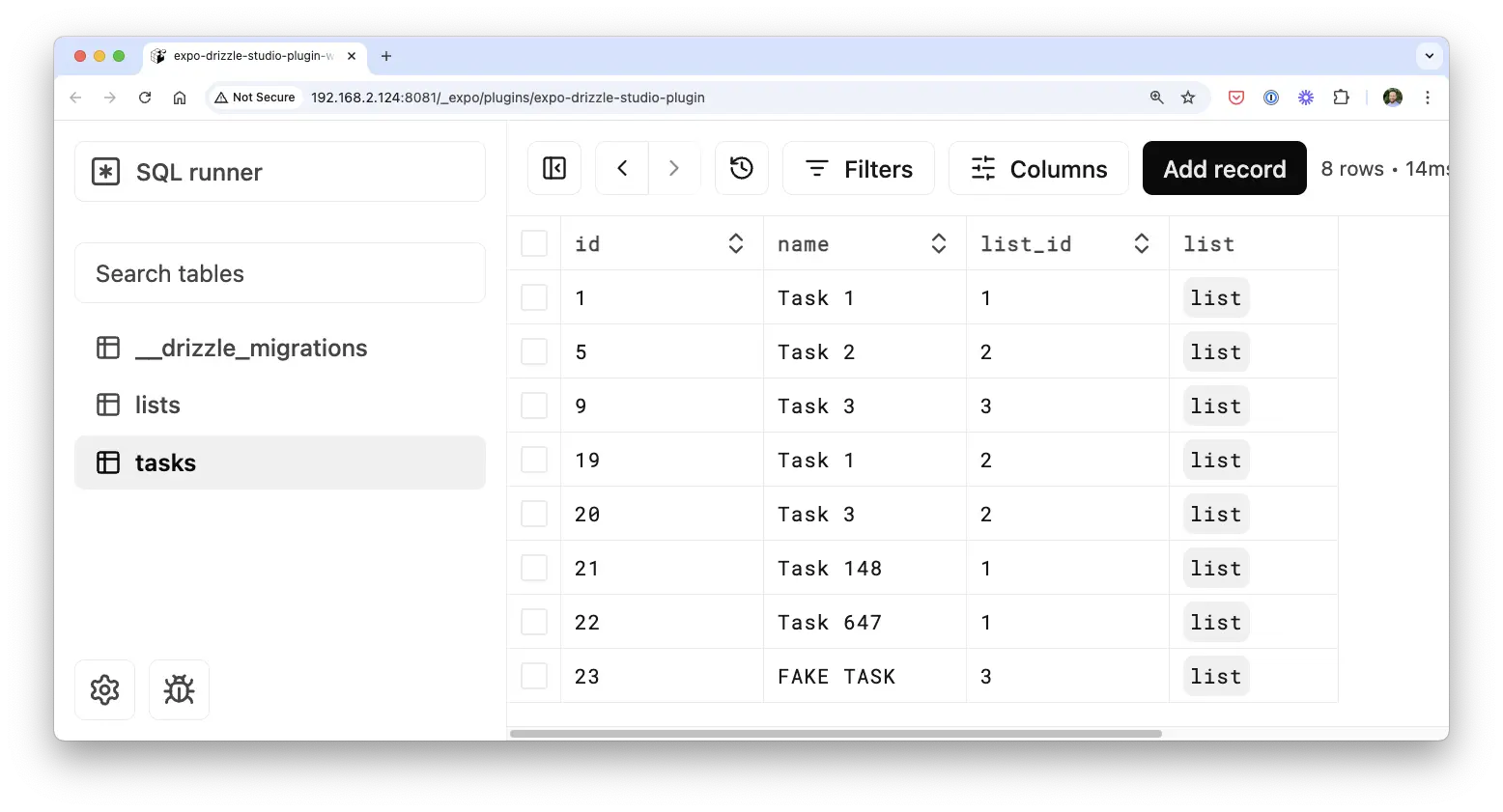
Debugging isn’t fun, but with React Native, it’s no longer a roadblock. It’s just part of the process — and a much better one at that.
Expo: A Game Changer for React Native
If you’ve looked into React Native before, chances are you’ve heard of Expo.
But if your only experiene with Expo is 3+ years old, you’re missing out. Expo has come a long way since then, and is now the recommended way to build React Native apps.
Because Expo is doing so many things, it’s easy to confuse what it is.
At its core, Expo is all about making React Native more accessible and powerful. It simplifies the setup process so you can dive straight into writing code. No complicated configurations or wrestling with native modules—just install Expo, and yo’re off to the races.
But the real magic of Expo is how much it has matured. With tools like EAS Build and Submit, you can build and deploy production-ready apps with minimal hassle.
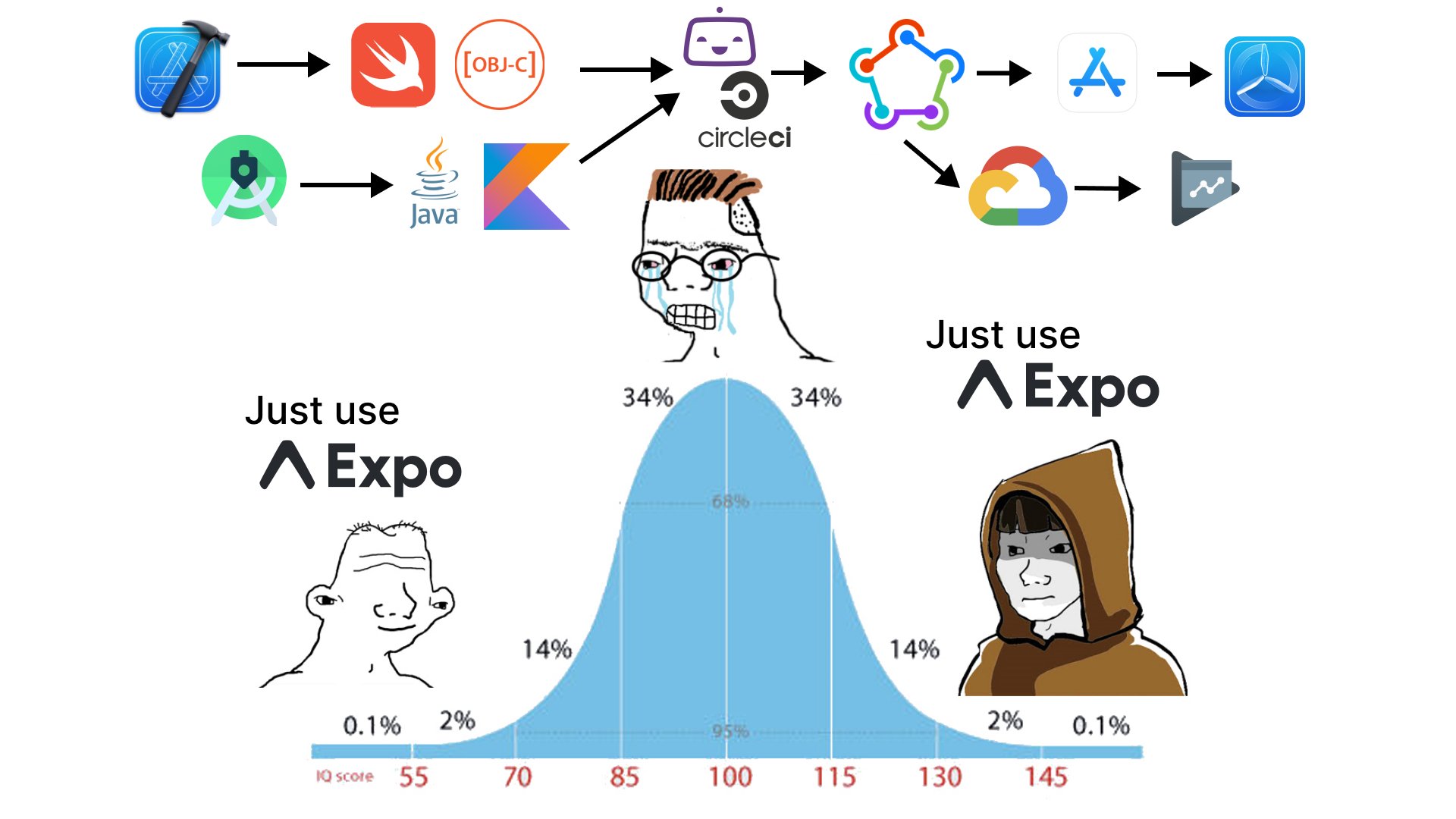
Want to publish to the App Store or Google Play? Expo handles that for you.
Need to add custom native modules? You can do that now too, thanks to Expo’s bare workflow and Prebuild.
And let’s not forget Expo Router. If you’re coming from a web background, this will make you feel right at home with file-based routing, just like in Next.js. It bridges the gap between web and native development, making it easier than ever to transition your skills.
Perhaps the best proof of Expo’s power is how many big companies are now using it in their production apps. It’s not just a stepping stone; it’s a full-fledged solution for building and scaling apps.
If you’ve ever felt intimidated by mobile development, Expo is here to change that. It lowers the barrier to entry without sacrificing the flexibility you need to build something amazing. With Expo, React Native has never been more fun—or more productive—to work with.
Flutter’s Position Is Weakened: Why React Native Is Winning
For years, React Native and Flutter have gone head-to-head as the top cross-platform frameworks. But in 2025, React Native has taken the clear lead—and here’s why.
With its New Architecture, React Native now delivers performance on par with Flutter while staying true to its JavaScript roots. On top, packages like React Native Skia or React Native WebGPU bring the best of native rendering to React Native.
This makes it accessible to millions of developers already familiar with the language, unlike Flutter’s Dart-based ecosystem.
React Native also benefits from unparalleled support: it’s actively improved by Meta, Microsoft, and Expo, with a massive community and ecosystem of tools that outpace Flutter in both scale and maturity. And with Expo making development smoother than ever, React Native has become even more appealing to both beginners and experienced developers.
Flutter, meanwhile, struggles to maintain its momentum. Its adoption in production apps lags behind React Native, and native integrations often require more effort. With React Native’s advancements, the performance gap has closed — and its developer experience has surged ahead.

On top of that, Flutter was forked into Flock last year. While this is a good thing for the Flutter community, it’s a sign of weakness for Flutter itself.
It remains to be seen if Flock will be able to keep up with the pace of React Native, but for now, it definitely leaves a certain G’schmäckle as we say in Germany.
Next time someone tells you Flutter is better, ask for actual Top 100 apps developed with it.
In 2025, React Native is no longer just a contender — it’s the leader. If you’re starting a new project or picking a framework, the choice has never been clearer.
The Biggest Companies Use React Native (and Expo)
When it comes to credibility, nothing speaks louder than seeing the biggest companies in the world use a framework to build their flagship apps — and that’s exactly the case with React Native.
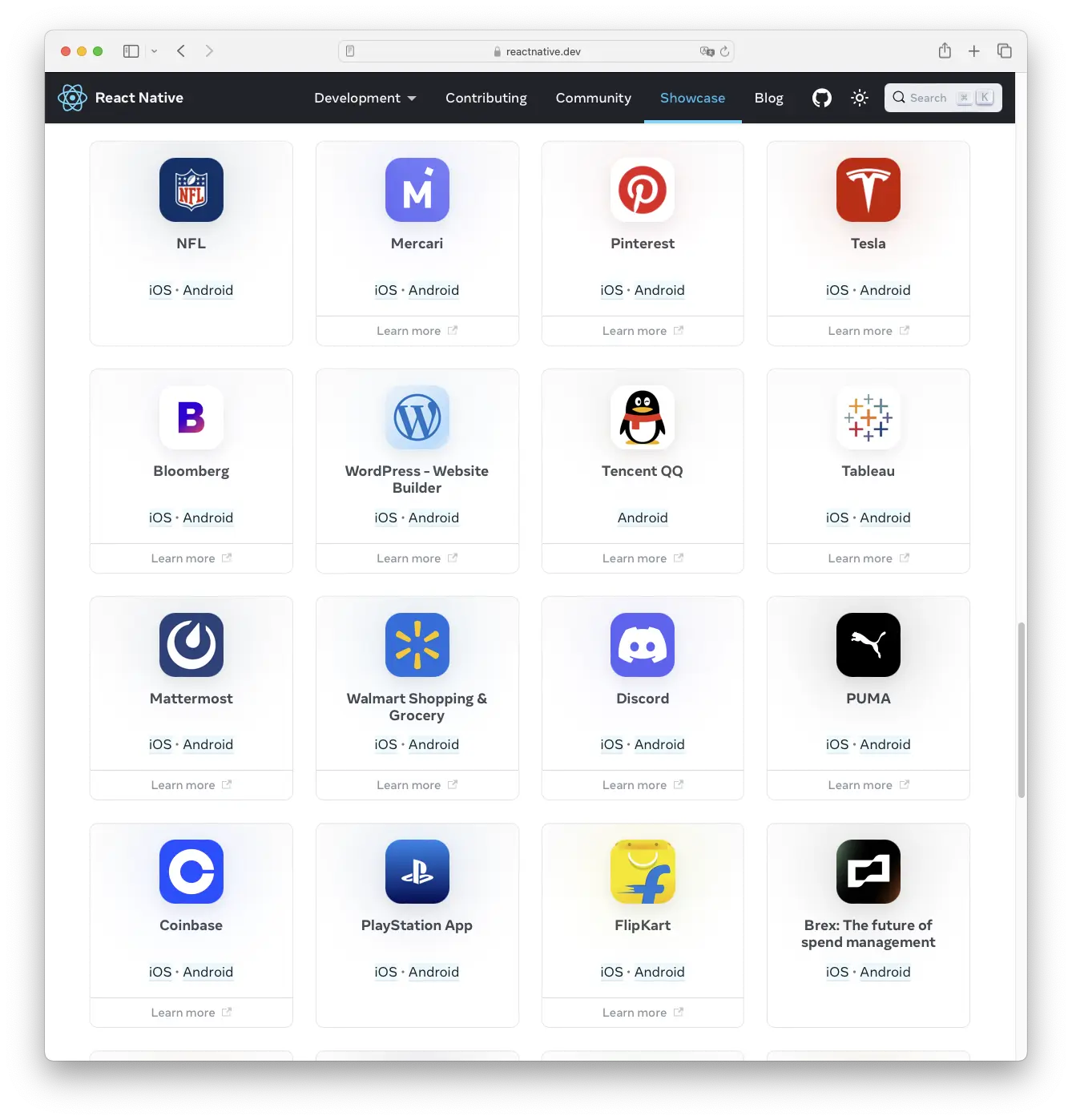
Household names like Instagram, Shopify, Tesla, Microsoft, and of course, Meta rely on React Native to deliver seamless, high-performance apps to millions of users every day. These aren’t just hobby projects; they’re complex, feature-rich apps that set the bar for user experience and reliability.
Meta even rebuilt their Instagram and Facebook app for Meta Quest with React Native!
Why do these companies choose React Native and Expo? It’s simple:
- Cross-Platform Efficiency: One codebase for iOS, Android, and even web.
- Native-Like Performance: Thanks to React Native’s New Architecture and tools like Hermes.
- Developer Productivity: With Expo, development is faster, simpler, and more predictable.
These companies have the resources to build apps in any framework they choose—yet they consistently pick React Native.
That’s not just a testament to its technology; it’s a sign that React Native is here to stay.
When the world’s biggest players put their trust in React Native and Expo, it’s a clear signal: this framework is the real deal.
The Biggest Companies Improve React Native
React Native isn’t just used by some of the biggest companies in the world — they’re also the ones making it better.
This is one of React Native’s most unique strengths: it’s actively supported and improved by tech giants like Meta, Microsoft, and Amazon.
Take Meta, for example. They didn’t just create React Native - they still use it to power parts of their apps, which serve billions of users. Their direct involvement means React Native isn’t just a framework; it’s a living, evolving tool designed to solve real-world challenges. Features like the New Architecture, Fabric, and Hermes were all driven by Meta’s need for performance and scalability.
Microsoft is another key player. They’ve contributed heavily to tools and libraries, and even developed React Native for Windows and macOS, extending the framework to desktop platforms. This gives developers even more opportunities to build cross-platform apps with one codebase.
And that’s just naming the biggest one. Other companies like Shopify, Callstack, Sowftware Mansion and of course Expo are a main reason why React Native is where it is today.
The best part? These companies aren’t just improving React Native for themselves — they’re sharing these innovations with the entire developer community.
That means every improvement Meta, Microsoft, or any other company makes trickles down to you, empowering your apps to be faster, smoother, and more reliable.
React Native’s evolution isn’t slowing down, and with these industry leaders driving it forward, its future has never looked brighter.
Web to Native Has Never Been Easier
If you’re a web developer, here’s some good news: transitioning from web to native has never been easier than it is with React Native in 2025.
You want to reuse your Tailwind CSS skills? No problem - just install NativeWind!
Want to gradually migrate your React web app to React Native?
The new Expo DOM Components enable you to basically copy over your existing web codebase and make it work on native - it’s wild.
'use dom';
// This component runs in the web.
export default function MyWebComponent({ name }) {
return <div>Hello {name}</div>;
}Even React Server Components are coming to React Native, making it easier to build server-side rendered apps.
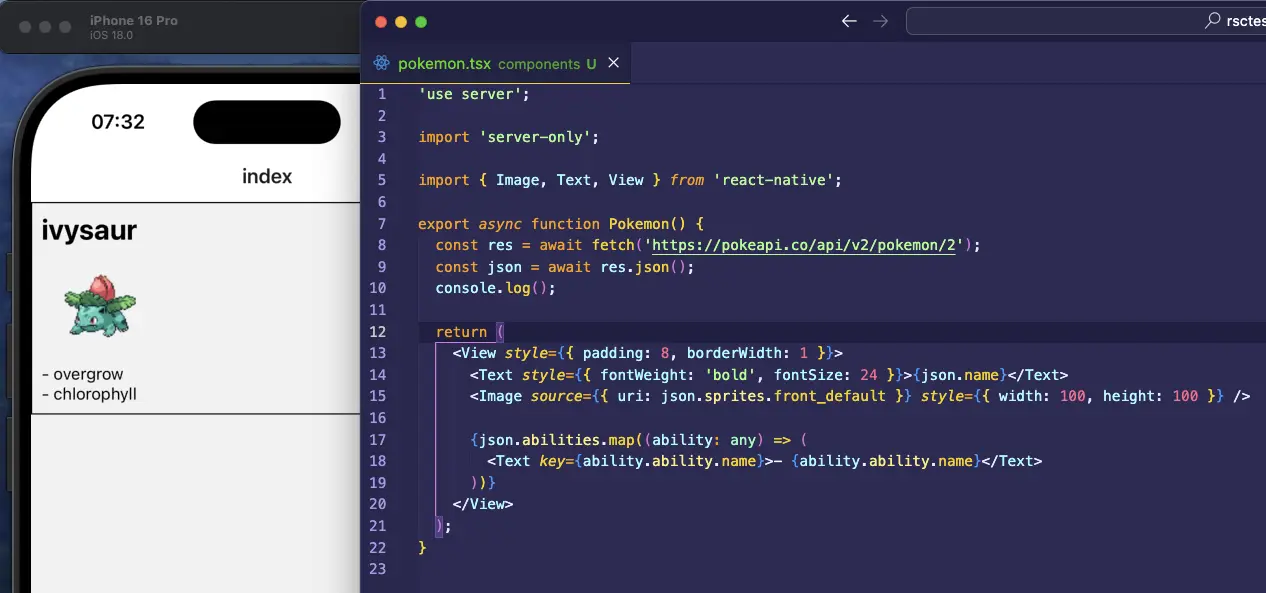
What really takes it to the next level is Expo Router, which introduced file-based routing — just like you’d find in frameworks like Next.js. This makes it easy for web developers to navigate native app development without feeling out of their depth.
But it doesn’t stop there. While React Native Web offers a great way to reuse your React Native codebase for the web, future projects like React Strict DOM might be the best way to truly achieve a “write once, run anywhere” approach.
For web developers looking to expand their skillset, React Native offers a smooth learning curve, powerful tools, and a chance to build apps that reach beyond the browser.
If you’ve been waiting for the right time to make the leap to mobile, this is it.
React Native makes it easy, familiar, and — most importantly — fun.
Version 1.0: A Milestone That Signals Stability
Why do almost all bootcamps teach React but rarely mention React Native?
FUD.
Fear, uncertainty, and doubt. After all, who would bet on a framework at version 0.76, especially when React itself is already at version 19?
This versioning quirk has been a long-running inside joke in the React Native community. Despite its success and widespread adoption, React Native has never crossed into the “1.0” territory.
The reasoning is technical — some people even assume React Native is using 0ver for versioning.
Whatever the reason, the “0.” prefix still signals “unfinished” or “unstable” — a perception that doesn’t reflect reality.

Here’s the thing: React Native is more ready for a 1.0 milestone than ever before. With the New Architecture in place, the framework has addressed many of the early concerns developers had about performance and scalability.
The ecosystem is mature, the tools are robust, and the companies backing it are among the most influential in tech. React Native isn’t just production-ready; it’s battle-tested by apps serving billions of users daily.
A version 1.0 release wouldn’t just be symbolic, it would be a clear signal to the developer world:
React Native has arrived, and it’s here to stay.
It would address the lingering FUD and put React Native on the same footing as its sibling React. For developers and decision-makers who’ve been on the fence, it would be the reassurance they need to fully embrace the framework.
In 2025, with the New Architecture fully rolled out and a thriving ecosystem in place, React Native hitting 1.0 feels not just possible — it feels inevitable.
And when it happens, it will mark a major turning point for a framework that’s already shaping the future of mobile development.
Conclusion: The Time for React Native Is Now
If you’ve made it this far, one thing should be crystal clear:
React Native in 2025 isn’t just an option — it’s the choice for building cross-platform apps that truly shine.
Whether you’re a seasoned developer or just starting out, the advancements in performance, tooling, and developer experience make React Native the ultimate framework for modern app development.
To sum it up:
- The New Architecture has shattered past limitations, giving us faster apps and smoother workflows.
- Expo has revolutionized the way we build and deploy, lowering the barrier for beginners while empowering experts to scale.
- The biggest companies in tech are not only using React Native but actively improving it, ensuring its future is brighter than ever.
- And with a potential Version 1.0 on the horizon, the framework is finally ready to shake off any lingering doubts about its stability.
React Native brings together everything you need to build apps that are efficient, performant, and truly native — all while leveraging skills you already know.
If you’ve been waiting for a sign to jump into mobile development, this is it.
The time for React Native isn’t tomorrow. It isn’t “someday.” It’s now.
And if you’re ready to take the leap, I’ve got just the thing to help you get started: Our new Zero to Hero React Native Mission on Galaxies.dev will teach you everything you need to know to build your first React Native app.
So what are you waiting for? Your React Native journey starts today.




